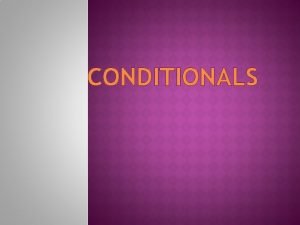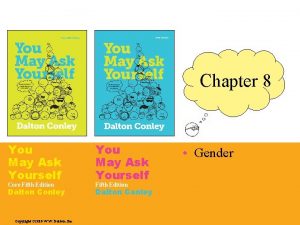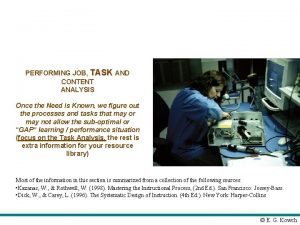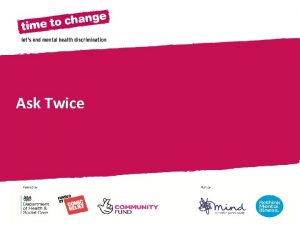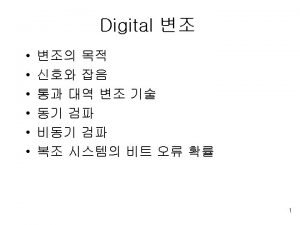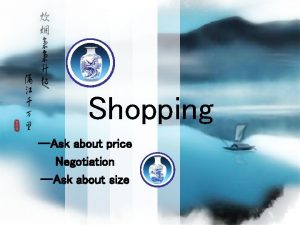Content Analysis Content Analysis When you directly ask



















- Slides: 19

Content Analysis

Content Analysis • When you directly ask people their opinion • Desire to give the most acceptable answer • Do you like me (the instructor)?

Content Analysis • Does your friend like you? • Observe what she/he says and does without being asked. • List all the significant interactions the two of you have had in the last several weeks. • Conversations, shared experiences and so on… • Evaluate each activity as being either friendly or unfriendly. • If the friendly activities outweigh the unfriendly ones she/he likes you

Content Analysis • Objective, systematic and quantitative investigation of something that has been (or can be) written down • An insurance agency, a new policy covering sports cars • Sports car drivers to be reached via radio • Most popular radio stations among them? • Asking mechanics at several maintenance and repair shops • A list of which stations the radios are tuned to

Content Analysis • A garment manufacturer • The line of lightweight winter coats • Check the letters and phone calls received by the consumer affairs department • Compare these with comments about other products

Content Analysis • Can be used to complement other types of research • The effectiveness of your internal magazine as part of program review of employee relations program • A content analysis of the last three years' issues to identify covered topics • Then, conduct a focus group or readership survey to find out what topics employees want to read about. • Compare the results of the content analysis with the results of your questioning • Create a more popular employee publication

Content Analysis • You are a media relations manager • Many of your news releases have been ignored by the newspapers and broadcast media • Finding: editors and news directors prefer stories with a strong local flavor • Effective writing for future releases • Content analysis of your releases of the last two years • The extent of the local significance (1) title on the release (2) first paragraph of the release (3) in the body of the release

Advantages and Disadvantages of Content Analysis • A low investment of time and money • A person working alone+ a simple calculator or a computer • Done "after the fact" without any effect on the people or issues being studied • Free of the enthusiasm that often surrounds surveys or focus groups • Going back in time to examine past message • The notion of intercoder reliability (level of agreement) —the degree to which several coders agree on how to label the content being studied • Susceptibility to coder influence and bias • The obvious and apparent meanings and interpretations that, unfortunately, are not always equally obvious and apparent to everyone • Can't establish cause-effect relationships

Conducting a Content Analysis Study Step 1. Select an appropriate topic Step 2. Select a population for your study. Step 3. Determine the unit of analysis Step 4. Develop the mechanics of the study Step 5. Analyze the data

Step 1. Select an Appropriate Topic • Academic studies dealing with media content such as sex and violence • Content analysis can be used by planners who want to know what people are saying about their organizations.

Step 1. Select an Appropriate Topic • News Coverage • Media Artifacts (news releases, video news releases) • Customer Comments (letters, telephone calls) • Competitors (offerings, advertising themes)

Step 1. Select an Appropriate Topic • A large health maintenance organization. • Promotes a series of patient workshops on topics such as weight loss, nutrition, exercise and general fitness. • Wants to get an accurate picture of how the larger daily newspapers deal with these issues • An eventual public-education campaign that will look to the newspapers for support • Will be helpful to know something about the newspapers' current and recent coverage of these topics.

Step 2. Select a Population • You identify the six largest newspapers • You decide to limit your study to their news sections (local and national/international), as well as to relevant specialized sections such as lifestyle and science/health. • You select a sample that includes each of the six newspapers for the following varied schedule throughout the last 12 months • Monday, first week of January; Tuesday, second week of February; Wednesday, third week of March…

Step 3. Determine the Unit of Analysis • You search the newspapers, and count the number of news that deal with one of the topics of your interest (weight loss, nutrition, exercise, general fitness and so on), as you have defined them. • Attitude: Each article related to fitness will be coded as "positive, " "negative“ or "neutral, " depending on how its tone relates to your message of encouraging fitness.

Step 3. Determine the Unit of Analysis • Accuracy: Each article will be coded as "very accurate, " "moderately accurate“ or "inaccurate, " based on how well it presents information that is currently accepted by medical and fitness professionals. • Prominence: Each article will be rated for a "prominent position" (any location on Page One of a section, or top-of-page placement on an inside page) or "nonprominent position" (placement elsewhere on a page) • Demographics: Each article will be coded as to its evident appeal based on gender (men, women or both genders) and age (young, middle, older readers or all ages). This may be determined through criteria such as placement in a particular section (such as women's page, youth page etc. ) or by the people shown in accompanying photographs or cited as examples within the article.

Step 4. Develop the Mechanics of the Study • Have other people to minimize coder bias • Each coder should approach the item in the same way. • What is a positive to one person may be neutral to another. • That's one of the shortcomings of content analysis. • One way around this is to have three coders do each item and then record the majority response.

Step 5. Analyze the Data • Report the results in raw numbers and percentages • Discuss insights that you get from those findings. • Many reports conclude with recommendations.

Step 5. Analyze the Data • The research shows that Newspapers A and B provide similar amounts of coverage to fitness-related information. • Newspaper C has less fitness news.

A Logical Follow-up Step • Contact the editorial staff of Newspaper C and arrange a meeting. • Noncritically present your findings that indicate the newspaper's relative disinterest in fitness-related articles. • You might point to surveys indicating a growing interest within the general population, offering possible ways in which your organization could assist the newspaper in increasing its coverage of this topic. • Perhaps you will learn that you could foster more articles by suggesting strong local angles to general fitness information or by offering experts from your organization as interview subjects. • Additionally, you might contact Newspapers A and B and share your findings concerning their performance, encouraging their continued attention to fitness matters.
 Answers
Answers Pendleton rules of feedback
Pendleton rules of feedback 10 examples of zero conditional sentences
10 examples of zero conditional sentences Finish these sentences
Finish these sentences Why is it useful to use units like a dozen or a ream
Why is it useful to use units like a dozen or a ream Perhaps one day a millionaire
Perhaps one day a millionaire Whatsoever he ask you to do do it
Whatsoever he ask you to do do it You may ask yourself chapter 8
You may ask yourself chapter 8 30 interview questions you can't ask
30 interview questions you can't ask Please clean the room before you live
Please clean the room before you live If you could ask jesus one question
If you could ask jesus one question Carrier content and real content in esp
Carrier content and real content in esp Dynamic content vs static content
Dynamic content vs static content Content analysis vs discourse analysis
Content analysis vs discourse analysis Task analysis and content analysis
Task analysis and content analysis Content analysis of secondary data
Content analysis of secondary data You say that you love rain
You say that you love rain You are what you eat do you agree or disagree
You are what you eat do you agree or disagree If you think you can you can poem
If you think you can you can poem Tell me what you eat and i shall tell you what you are
Tell me what you eat and i shall tell you what you are





